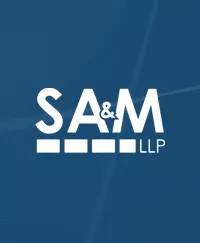 This summary can only hit some of the more prominent aspects of the taxation of the development, purchase and sale of intellectual property.
This summary can only hit some of the more prominent aspects of the taxation of the development, purchase and sale of intellectual property.
1. What is intellectual property for purposes of this analysis?
a. Copyrights, literary, musical or artistic compositions or similar property are expressly identified under the Internal Revenue Code for special “non-favorable” treatment on sale by the creator.[1] Video games, books, movies, television shows all fall into this category of asset in the hands of the developer.[2]
b. Another class of intellectual property, including trade secrets, formulas, know how and other methods, techniques or processes that are the subject of reasonable efforts to maintain secrecy fall within the general class of intangible assets that may be treated as a capital asset on sale but are subject to special rules on the useful life over which to amortize the cost of the intangible asset, as discussed below.[3]
2. How is the developer or owner of intellectual property treated?
a. In general, self-created copyrights, literary, musical or artistic compositions are not eligible for capital gain treatment on sale.[4] As an example, the Tax Court has held that the concept for a television show was not eligible for capital gain treatment.[5]
b. Purchased intellectual property is generally eligible to be treated as a capital asset on sale unless the owner holds the intellectual primarily for sale to customers in the ordinary course of business, as in the case of a software or game developer selling individual, non-custom programs. The sale of the copyright and the code to the program would not be treated as capital gain in the hands of the developer but could yield capital gain if the copyright and the software had been purchased.
c. The exclusion from capital asset treatment does not necessarily apply to a self-created invention that can be patented[6]. The treatment on disposition of such assets may depend on whether the cost of development was capitalized and amortized or whether the development costs were expensed and deducted in the course of development as well as whether the asset is held for sale to customers (not a capital asset) or is used in the taxpayer’s business (in which case it may be eligible for capital gain/ordinary loss treatment).
d. A transaction in which the developer is compensated has to be analyzed to distinguish a license arrangement from a sale.[7] An agreement cast in the form of an exclusive license may be treated as a sale for tax purposes even if title remains with the grantor. The key question is whether the transferor retained any rights which, in the aggregate, have substantial value.[8]
3. How is the purchaser of intellectual property treated?
a. The purchaser of the intellectual property may capitalize and amortize the cost of developing the intellectual property if the intellectual property is to be used in the creator’s business.[9] Computer software is automatically accorded three year straight line amortization if the developer or purchaser opts to amortize the cost of the software.[10] If the development of the software qualifies as research and development in the laboratory or experimental sense, the costs are deductible currently.[11]
b. The purchaser of the intangible assets used in the purchaser’s trade or business (other than computer software as provided above) is permitted to amortize the cost of purchase allocated to most forms of intellectual property over 15 years on a straight line basis.[12] Section 197 assets include goodwill, going concern value, workforce in place, operating systems, information bases, customer based intangibles, vendor based intangibles, licenses, trade marks, trade names, and franchises.[13]
c. The purchaser of the stock of a company that owns intellectual property is subject to the treatment to which the company is already subject unless the purchaser and seller of the stock elect to treat the stock sale as an asset sale[14].
4. Sales and Use Tax. Of the states that impose sales and use tax, most impose the tax on the sale of tangible personal property. In California, the sale of a custom written computer program is not subject to sales tax.[15] In the case of the sale of a prewritten program to customers, the sales tax is imposed if the software is sold on compact discs or on other media stored in tangible form.[16] Software that the buyer downloads from a website and that is not otherwise delivered on tangible media is not a sale of tangible personal property subject to the California sales tax.[17]
5. Conclusion. The tax treatment of intellectual property is determined by the nature of the intellectual property and how the taxpayer obtained the intellectual property. The cost of developing self-created intellectual property may be eligible for immediate expensing or may have to be capitalized and carried on the taxpayer’s books, not eligible for either deduction or amortization depending on its purpose, the nature of the assets’ development and the assets’ useful life. The cost of purchasing intangible assets used in a business is amortized on a straight line over 15 years except for acquired computer software, which is written off over three years. The cost of other purchased intangible assets may be eligible for amortization using the income forecast method. The sale of intellectual property generally results in capital gain or loss unless the property is a self-created copyright or an asset held primarily for sale in the taxpayer’s business.
___________________________________________

For more information regarding Intellectual Property Taxation, please contact Michael Shaff at or (818)444-4522.
[1] Internal Revenue Code (“IRC”) §1221(a)(3) (This category of intellectual property is denied capital asset treatment on sale if created by the taxpayer’s personal efforts.).
[2] See Rev. Proc. 2000-50, 2000-2 C.B. 601.
[3] See, e.g., Graham v. United States (N.D. Tex. 1979) 43 AFTR 2d 79-1013, 79-1 USTC ¶9274 (dealing with the formula for Liquid Paper).
[4] IRC §1221(a)(3).
[5] See, e.g., Kennedy v. Commissioner T.C.M. 1965-228, 24 (CCH) 1155 (1965).
[6] IRC §1235 (individual inventor or individual purchaser from the inventor will be able to treat the patent as a capital asset if held for more than a year.)
[7] See, e.g., Weimer v. Commissioner TC Memo 1987-390, 54 (CCH) TCM 83 (1987).
[8] E.I. DuPont de Nemours & Co. v. United States (3d Cir. 1970) 432 F2d 1052, 26 AFTR 2d 70-5636, 70-2 USTC ¶9645 (sale of right to use patents to manufacture nylon while retaining the right to manufacture Dacron with the same patents held a sale of substantially all of the value of the patent sold).
[9] IRC §167(g) (allowing the income forecast method of amortization for many types of intellectual property other than computer software).
[10] IRC §167(f).
[11] Treas. Reg. §1.174-2(a).
[12] IRC §197(a).
[13] IRC §197(d)(1).
[14] IRC §338(h)(10).
[15] Cal. Rev. & Tax. Code §6010.9; Nortel Networks, Inc. v. State Board of Equalization (Cal. App. 2011) 119 Cal. Rptr.3d 905.
[16] Sales and Use Tax Annotation 120.0531 (Apr. 10, 1997).
[17] Sales and Use Tax Annotation 120.0518 (March 11, 1994).

